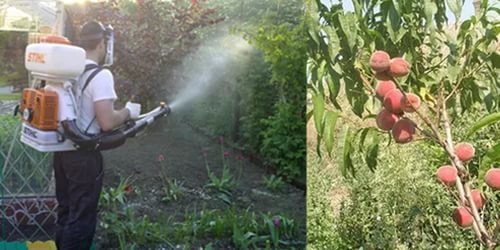Contents of the article:
Orchid Phalaenopsis attracts the attention of flower growers primarily because it lasts up to half a year. Of course, the plant will please the flowering species with proper care, which includes the proper introduction of fertilizer. After all, fertilizer will benefit only in the case of making it in the period of flower growth. When the orchid is in a dormant period, it can even be dangerous and lead to its death.
General requirements for orchid fertilizers
 For fertilizing orchids, fertilizers in liquid form are most suited to distribute it over the entire soil in a pot. It is written on a container with fertilizer - “For orchids”.
For fertilizing orchids, fertilizers in liquid form are most suited to distribute it over the entire soil in a pot. It is written on a container with fertilizer - “For orchids”.
Universal compound fertilizers are also often used. However, it is necessary to take into account that when they are made, the recommended dose should be reduced by a factor of 3 in order to prevent the roots of the plant from burning. For the same reason, top dressing should be chosen with a low level of acidity.
The most essential elements for the active development of an orchid are phosphorus, potassium and nitrogen. Depending on the stage of development and growth of phalaenopsis, their different concentrations are used:
- , during the growth period, preference is given to fertilizers with a high nitrogen content;
- for the formation of buds require phosphorus and potassium;
- young orchids for normal development need supplements with a predominance of phosphorus;
- also use phosphorus to ensure bright and lush colors.
Orchids can be fertilized in two ways: the introduction of nutrients at the root and foliar top dressing.
Phalaenopsis root feeding

Root feeding applies only to absolutely healthy orchids. But even here one should adhere to certain rules:
- Fertilizing is not carried out during the period of rest and after transplanting a flower.
- It is better not to expose diseased plants to root dressings.
- In order not to shorten the flowering period, it is impossible to fertilize the orchid during the flowering period.
Before applying the feeding, it is necessary to moisten the roots well by watering the plant.
Dilute fertilizer in lukewarm water in the proportion shown on the package. Pour the prepared liquid into a small bowl - so that the pot will fit there. Place the orchid pot in a bowl for 20 minutes and pour a little with the same solution on top. At the end of the recommended time, pull out the pot and leave excess water to the glass.

Among the root fertilizers, the most effective are the Master-Color wagon( for the development of leaves and roots), the Master-Color Orchid( contributes to the establishment of peduncles), Pocon( increases disease resistance), Greenworld( increases the flowering period).
Foliar application of fertilizers
Foliar fertilization is used during the growth of the root system, in case of damage to the root system, as well as in chlorosis. Sheet top dressing is recommended when the weather is cloudy so that the leaves do not get burned by the sun.
Root and leaf feeding should be carried out in turn, but in no case at the same time.

Dr. Folly's Orchid spray has proven itself well - they sprayed leaves from above and below, and aerial roots on the surface of the pot. Flowers and buds can not handle. This universal fertilizer prevents chlorosis( when the flower lacks nutrients), leaves shrink and also stimulates flowering.


